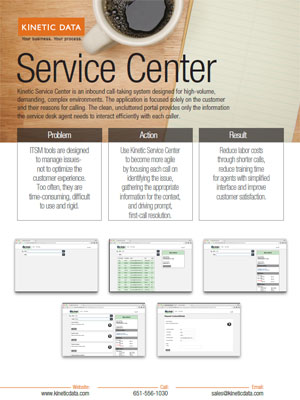Comprehensive Guide to Enterprise IT Service Automation
IT support automation uses software workflows, rule engines, AI/ML, and integrations to automate...
As products and services become more commoditized, competition is increasingly global, and high product quality is no longer a differentiator, the potential reward for providing excellent customer...

As products and services become more commoditized, competition is increasingly global, and high product quality is no longer a differentiator, the potential reward for providing excellent customer service becomes ever greater. As noted here recently, having “happy customers (leads) to higher profitability and stock price.”
 The costs of poor customer become greater as well. According to the latest customer service statistics, just 1% of customers ” feel that their expectations of good customer service are always met.” Meanwhile, 86% are willing to pay up to 25% more for a better customer experience.
The costs of poor customer become greater as well. According to the latest customer service statistics, just 1% of customers ” feel that their expectations of good customer service are always met.” Meanwhile, 86% are willing to pay up to 25% more for a better customer experience.
Among other findings regarding the frustration caused by poor customer service:
There are many potential causes of disappointing customer service, from insufficient training, to the wrong or improperly configured technology, to poorly designed processes. But providing great customer service doesn’t have to be terribly difficult.
First, have all of the company’s top executives attempt to get a technical or billing question answered using the same mechanisms a customer would. This will likely provide some eye-opening appreciation of the customer service experience.
Next, design the ideal customer experience process—from the customer’s perspective, not what’s most convenient for the organization.
Keep in mind that most customers don’t want to talk to you—so make it easy as possible for them to find answers and solve simple problems on your website or service portal.
But also make it easy to find the phone number of customer service, for more complex issues. And keep the automated phone answering system maze as uncomplicated as possible, enabling callers to quickly reach a real person.
Finally, make it simple for your customer service personnel to provide great service. Long, complicated forms that ask for extraneous or duplicate information make for a bad customer service experience, regardless of whether it’s the customer or service rep who has to complete them.
Here’s an ideal, simple flow that’s easy for the service rep and likely to provide the customer with a positive experience, i.e.: getting the answer needed, as quickly as possible.
The customer service rep starts with just two questions to answer: who is calling, and what is the issue.
The service rep types the first few letters of the customer’s name and is presented with a list of possible matches. The rep may need to ask the customer a follow-up or identity verification question at this point.
The system pulls information from multiple data sources, giving the rep a detailed view of the customer: purchase history, call history, warranty status, etc..
Entering the issue type works similarly; the rep types in a few words describing the problem and is presented with a list of possibilities.
After selecting the matching issue type, the rep is presented with a resolution screen. This may be a simple form to complete a follow-up task (e.g., send the customer a rebate, apply a discount to the next bill, schedule a technician visit, etc.) or just text with an answer to the customer’s question.
This approach optimizes the customer service experience, providing for fast and accurate issue resolution.
Just as important, it improves the experience for the customer service representative, who is able to handle more calls, with less stress, less typing, and less customer frustration to deal with.
And those two results lead to increased customer loyalty, reduced service costs, and higher profitability—all from providing simply great customer service.

IT support automation uses software workflows, rule engines, AI/ML, and integrations to automate...

Business process reimagined is the strategic renewal of how work gets done by combining modern digital...

You've probably noticed (what we're calling) the "logo-swap test" lately: all the AI ads in market sound...